Guides
Curry Leaf Plant Care: The Ultimate Guide for Healthy Growth
Are you struggling to keep your curry leaf plant healthy? You’re not alone. Growing a thriving curry leaf plant can seem challenging, especially when it comes to watering, pruning, and maintaining the right conditions for growth. But don’t worry—this ultimate guide is here to help you master the art of curry leaf plant care.
Whether you’re a seasoned gardener or a beginner, taking care of this fragrant and versatile plant is easier than you think. In this guide, we’ll walk you through the essential tips and tricks to keep your curry leaf plant healthy, vibrant, and productive.
What is a Curry Leaf Plant?
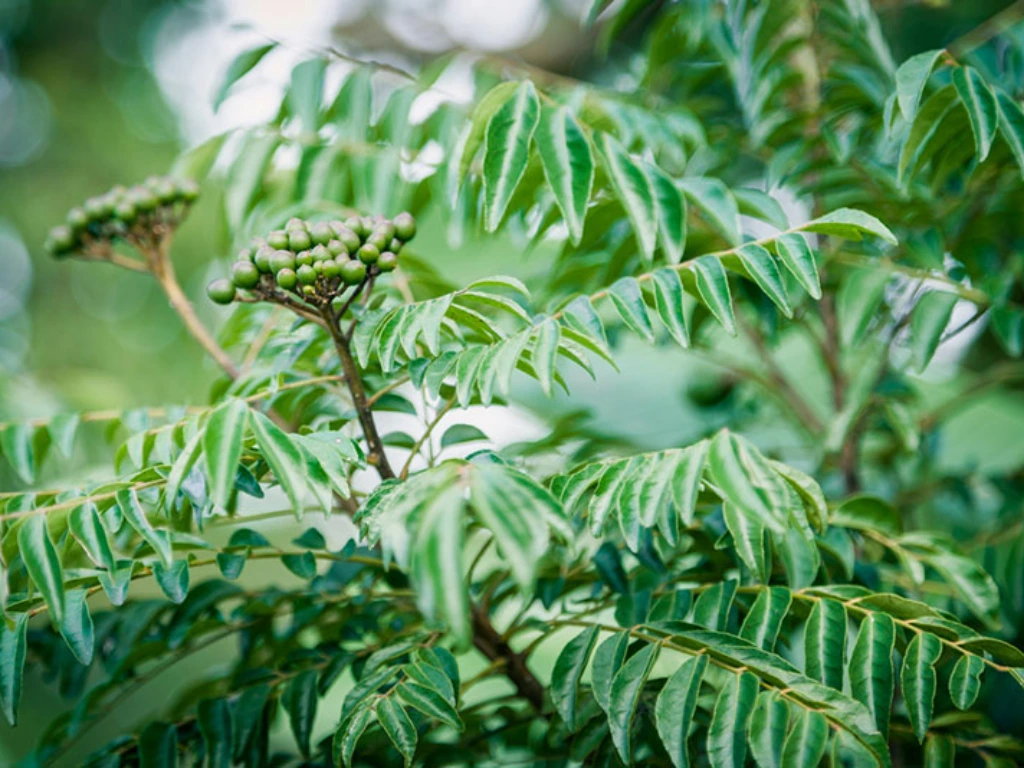
The curry leaf plant, scientifically known as Murraya koenigii, is an evergreen shrub or small tree native to India and other parts of Asia. This fast-growing plant can reach a height of 6 to 20 feet, making it an excellent addition to both gardens and indoor spaces. The most recognizable feature of the curry leaf plant is its aromatic, spicy leaves, which are composed of multiple leaflets arranged in a pinnate pattern along the stem. These fresh, green leaves are highly valued for their culinary uses and are typically harvested to enhance the flavor of a variety of dishes.
The curry leaf plant also produces fragrant white flowers that bloom in the spring, which eventually turn into small, black fruits. However, unlike the leaves, the fruits are not edible. When grown outdoors, the plant thrives in full sun and well-drained, acidic soil. It is typically planted in the spring and is best suited for USDA hardiness zones 9-12, making it ideal for warmer climates.
Why Should You Grow a Curry Leaf Plant?
The curry leaf plant is a tropical herb native to India and Southeast Asia. It’s an essential ingredient in many culinary dishes, particularly in Indian and Sri Lankan cuisines, where its fresh leaves are used for seasoning curries, soups, and other savory dishes.
But the benefits of this herb don’t stop in the kitchen. Growing Curry leaf plant also brings a touch of tropical beauty to your home or garden. Plus, it has numerous health benefits, including aiding digestion, reducing inflammation, and boosting immunity.
Curry Leaf Plant Benefits
Not only is the curry leaf plant a great addition to your garden, but it also provides many culinary and health benefits.
Culinary Uses
Fresh curry leaves are a staple in Indian cuisine, adding a distinct flavor to curries, soups, and rice dishes. The leaves are typically sautéed in hot oil to release their aromatic oils before being added to the dish. You can also use curry leaves in chutneys or teas.
Health Benefits
Curry leaves are rich in antioxidants, vitamins, and minerals. They are known to promote healthy digestion, reduce cholesterol, and even help with weight loss. The leaves have anti-inflammatory properties and can aid in controlling blood sugar levels. Consuming curry leaves regularly may also improve skin health and boost immunity.
Choosing the Right Location for Your Curry Leaf Plant
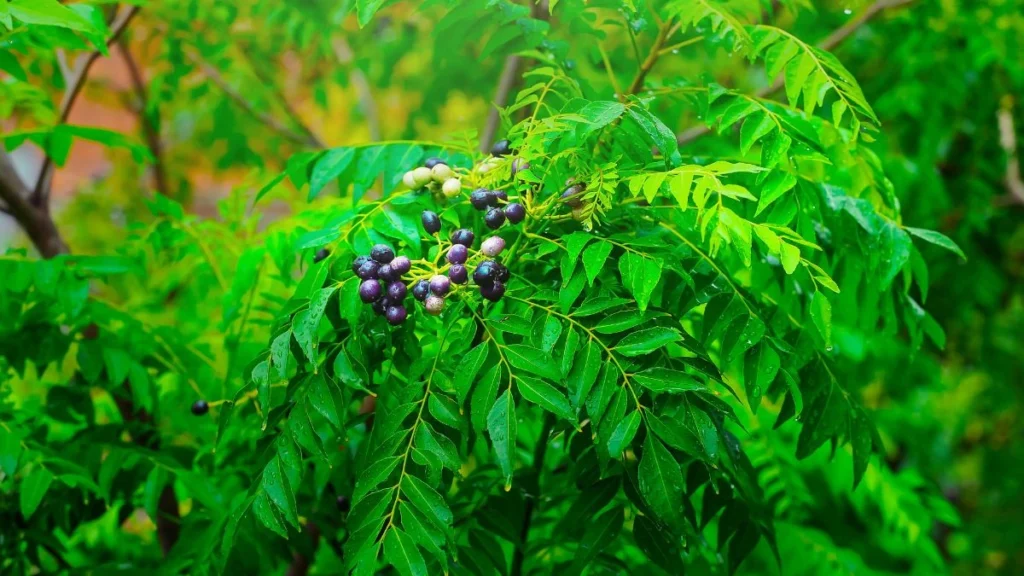
Indoor vs Outdoor Planting
Curry leaf plants thrive in warm, sunny environments, so if you live in a cooler climate, you may want to grow your plant indoors. Indoors, place your curry leaf plant near a south-facing window where it will get plenty of sunlight.
If you’re lucky enough to live in a tropical or subtropical climate, you can grow the curry leaf plant outdoors in your garden. Just make sure it gets full sun, as the plant needs at least six hours of sunlight a day to grow strong and healthy.
Sunlight Requirements
Curry leaf plants need bright, direct sunlight to thrive. Indoor plants should be placed in a spot where they receive at least 6 hours of sunlight per day. If you’re growing your curry leaf plant outdoors, ensure it is positioned in a sunny spot away from any trees or structures that could block the light.
Temperature and Humidity Preferences
The curry leaf plant is best suited to warm climates, with temperatures ranging between 70°F to 95°F (21°C to 35°C). It’s sensitive to frost, so if you’re growing it outdoors, make sure to bring it indoors if the temperature drops below 50°F (10°C).
The plant also enjoys high humidity, so if you’re growing it indoors, consider placing it near a humidifier or using a misting spray on the leaves occasionally to replicate the humidity levels of its native habitat.
Planting and Potting the Curry Leaf Plant
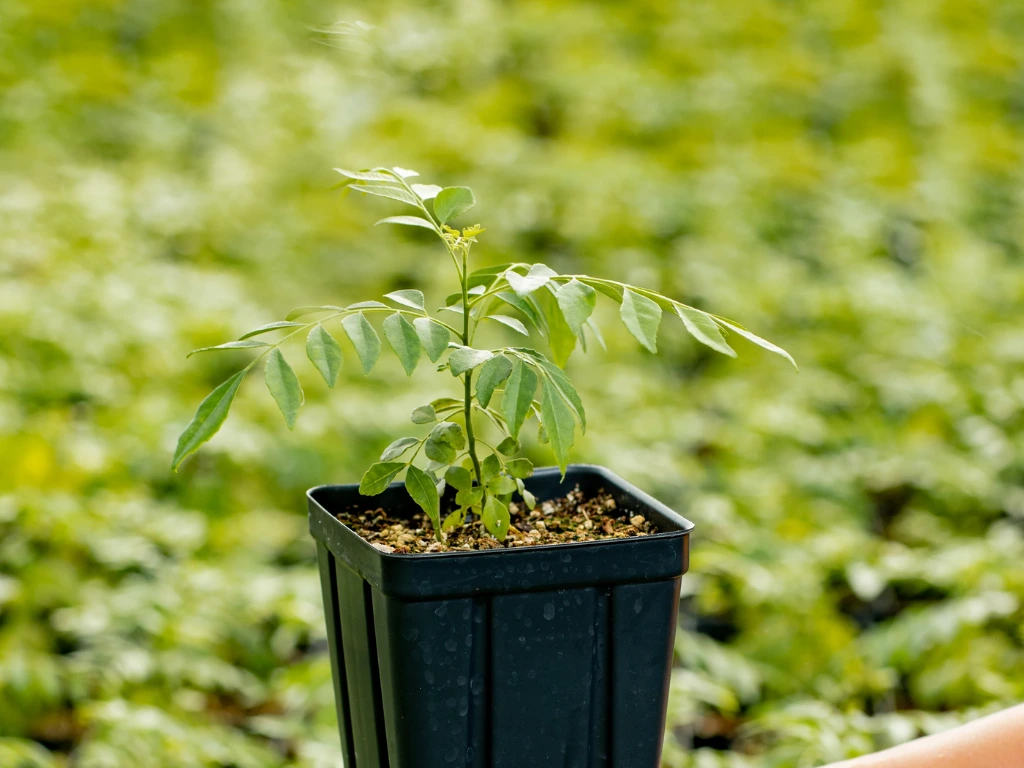
Best Soil for Curry Leaf Plant
Curry leaf plants thrive in well-drained, slightly acidic soil. Use a mix that is rich in organic matter, such as a combination of potting soil, perlite, and compost. Avoid heavy, clay-based soils, as they tend to retain too much moisture, which can lead to root rot.
How to Pot Curry Leaf Plants
If you’re growing your curry leaf plant in a pot, choose a container that is large enough to accommodate the roots and has drainage holes. When potting the plant, make sure to gently loosen the roots and plant it at the same depth it was in the nursery pot. Fill in around the roots with your prepared soil mix and water thoroughly after planting.
Caring for Curry Leaf Plant
Once you’ve got your curry leaf plant planted, it’s time to focus on proper care. Here are some key tips to help your plant thrive.
Watering
Curry leaf plants like a moderate amount of water. They prefer their soil to be kept moist but not waterlogged. Water your plant when the top inch of soil feels dry, but be careful not to overwater. Overwatering can lead to root rot and other issues.
Fertilizing
To keep your curry leaf plant healthy and growing, you’ll need to fertilize it regularly. Use a balanced fertilizer every 4-6 weeks during the growing season (spring and summer). Organic options like compost or a slow-release fertilizer are great choices. Avoid over-fertilizing, as this can lead to lush foliage with little flavor in the leaves.
Pruning
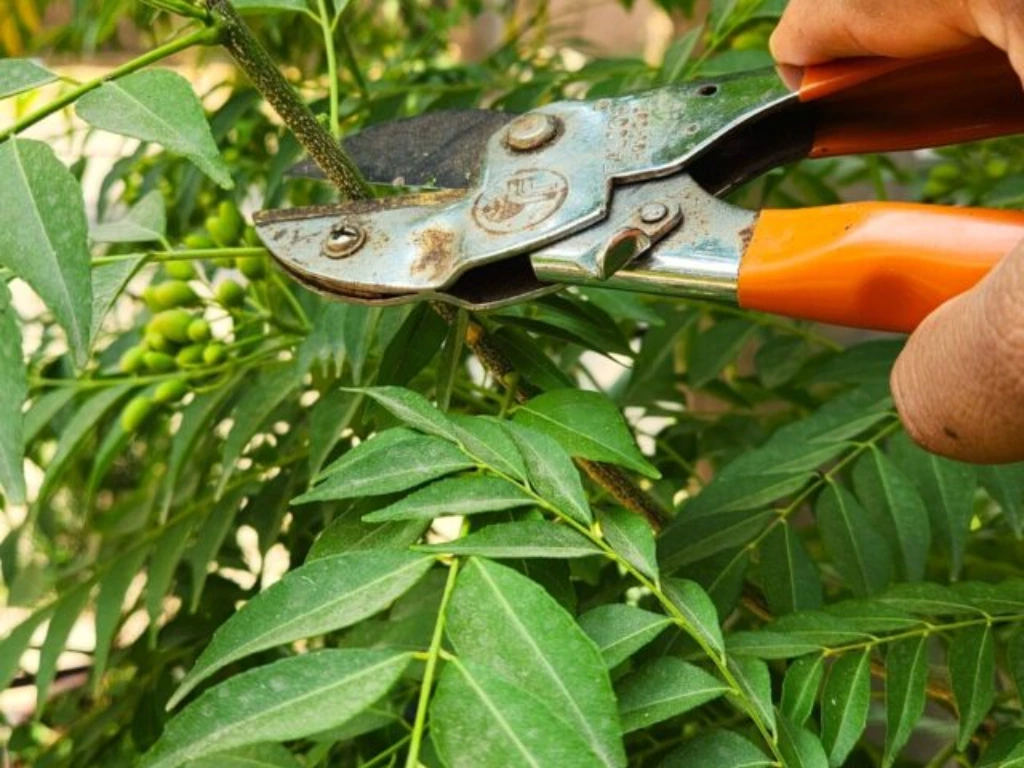
During the first two years, it’s important to pinch off the flower buds to prevent the plant from using its energy to produce seeds. This helps the curry leaf plant establish strong growth. If you’re growing the plant mainly for its foliage, continue removing flower buds each year.
Additionally, regular pruning is necessary to remove dead branches and leaves. This encourages the growth of fresh, healthy foliage and keeps the plant looking its best.
Potting and Repotting
Both Dwarf and Gamthi curry leaf plants are small enough to grow in containers. Choose pots with large drainage holes and use a light, well-draining potting mix.
For the Dwarf variety, start with a five-gallon container. As it grows, repot it in the spring into a larger container. The slower-growing Gamthi variety can stay in its original container for at least a year, but repot it into a bigger pot as needed for continued growth.
Propagating Curry Leaf Plant
Curry leaf plants can be easily propagated either from seeds or cuttings, with the latter being the more straightforward method.
To propagate from cuttings, start by using sharp pruners or a knife to take a 3-inch section from a healthy stem with a few leaves. Remove the leaves from the bottom inch of the cutting to help it establish roots.
Next, fill a 4-inch pot with a soilless potting mix and water it thoroughly. Insert the cutting into the soil, ensuring that about an inch of the stem is buried. Place the pot in a warm, moist area with bright but indirect light.
It’s important to keep the soil consistently moist, but not soaking wet. Within approximately three weeks, the cutting will have developed roots and can be transferred to a larger pot or planted directly in the garden. This method is a simple and effective way to grow new curry leaf plants.
Harvesting and Storing Curry Leaves

One of the joys of growing curry leaf plants is harvesting fresh, aromatic leaves whenever you need them. While curry leaves can be harvested year-round, the best time to pick them is in the morning when they are most flavorful.
To harvest, simply snip the desired number of leaves, being careful not to damage the stem or plant. You can use the leaves immediately in your cooking or store them for later.
For short-term storage, place fresh curry leaves in an airtight container or plastic bag and refrigerate for up to a week. For longer-term storage, freeze the leaves by laying them in a single layer on a baking sheet, then transferring them to an airtight container or freezer bag once frozen.
Common Issues and Troubleshooting
Like any plant, curry leaf plants can face a few challenges. Here are some common problems you might encounter, along with solutions to keep your plant healthy.
Yellowing Leaves and Pests
Yellowing leaves are often a sign of overwatering, nutrient deficiencies, or pest infestations. Make sure you’re not overwatering the plant, and check for signs of pests like aphids or mealybugs. If you find any, treat the plant with an insecticidal soap or neem oil.
Improper Growth and Fixing Problems
If your curry leaf plant isn’t growing as expected, it could be due to a lack of sunlight, poor soil, or improper watering. Ensure your plant is getting enough sunlight and adjust your watering habits. If your plant is in a pot, check the soil for drainage and consider repotting into a larger container.
Conclusion
Taking care of a curry leaf plant can be a rewarding experience, whether you’re a beginner or an experienced gardener. By choosing the right location, watering appropriately, fertilizing regularly, and pruning when needed, you can enjoy a healthy and thriving curry leaf plant.
Remember, growing curry leaf plants isn’t just about the culinary benefits; it’s also about creating a beautiful, fragrant addition to your home or garden. With the right care, your plant will provide fresh leaves for cooking and a touch of tropical beauty to your space.
Ready to start growing your own curry leaf plant? Follow these tips, and you’ll be on your way to having a thriving plant that brings health, flavor, and beauty to your home.
You may like:
- Summer Houseplant Care: 7 Smart Tips for Lush Green Leaves
- Glencoe Raspberry Care in Summer: The Ultimate Guide to Watering, Fertilizing, and Pruning in June
- How to Grow Calamondin Indoors: Easy Care Tips for Healthy Container Plants
Frequently Asked Questions
-
How often should I water my curry leaf plant?
Water your curry leaf plant when the top inch of soil feels dry. Be careful not to overwater as this can cause root rot. -
Can I grow curry leaf plants indoors?
Yes, curry leaf plants can thrive indoors as long as they get plenty of sunlight. Place them near a south-facing window for optimal growth. -
Why are my curry leaf plant’s leaves turning yellow?
Yellowing leaves are often a sign of overwatering, nutrient deficiencies, or pests. Check your watering schedule and inspect for pests. -
What is the best fertilizer for curry leaf plants?
Use a balanced fertilizer every 4-6 weeks during the growing season. Organic fertilizers like compost or slow-release options are ideal.
Curry leaf plant for you!

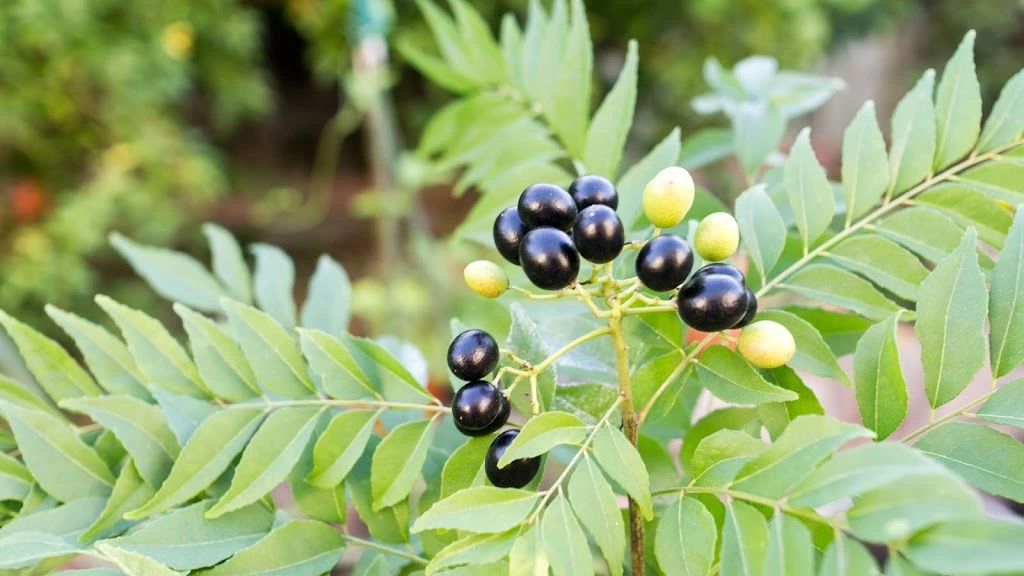

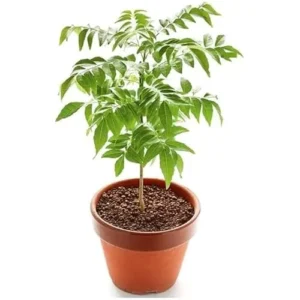
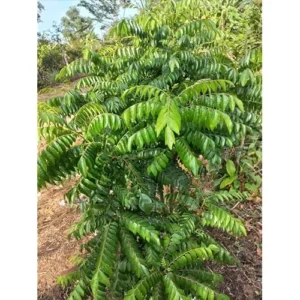
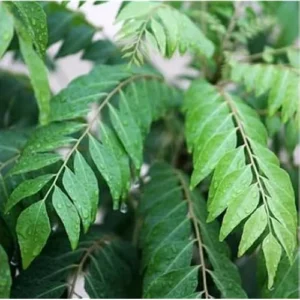
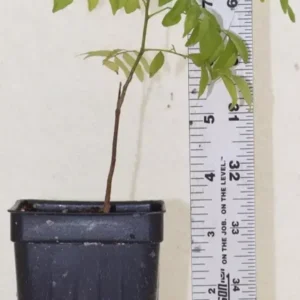
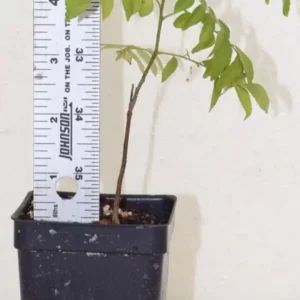

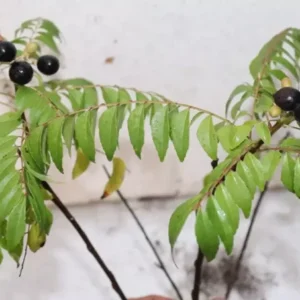
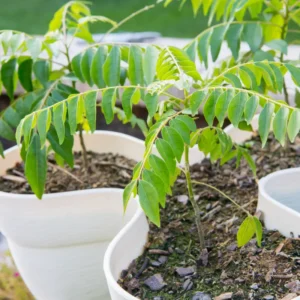
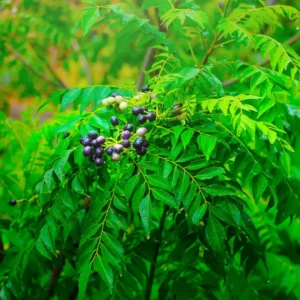
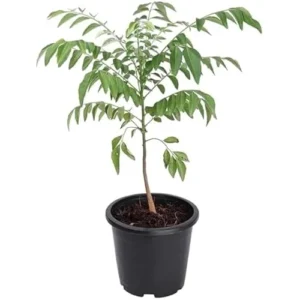
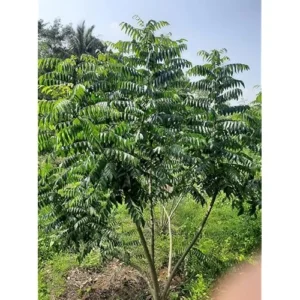
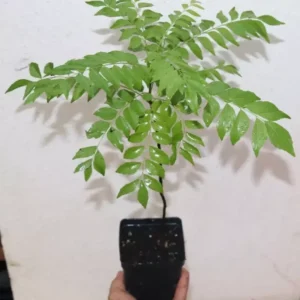
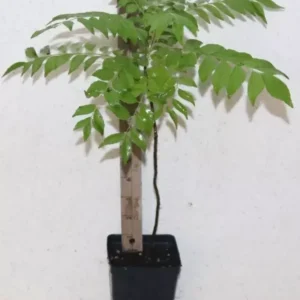
Swedish Ivy Care: How to Grow a Healthy, Thriving Plant
Have you ever looked at your Swedish Ivy and wondered why the leaves are turning [...]
Nov
Avoid These 10 Garlic Planting Mistakes for Bigger, Healthier Bulbs
Growing garlic at home is one of the most satisfying things a gardener can do [...]
Nov
How to Prevent Christmas Cactus Bud Drop: Tips for a Healthy Bloom
Have you ever noticed your beautiful Christmas cactus (Schlumbergera) starting to lose its buds just [...]
Nov
Discover 7 Stunning Types of Night-Blooming Cereus
Have you ever waited for a flower that only opens at night and then disappears [...]
Nov
How to Propagate Comfrey from Root Cuttings: Easy Guide for Beginners
If you’re looking to grow your own healthy comfrey plants without spending too much, propagating [...]
Nov
10 Best Christmas Plants to Gift This Holiday Season
The holiday season is finally upon us, and if you’re searching for the perfect gift [...]
Oct